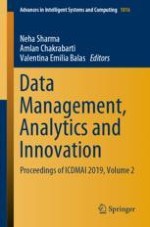2020 | OriginalPaper | Buchkapitel
A Generalized Ensemble Machine Learning Approach for Landslide Susceptibility Modeling
verfasst von : Akila Bandara, Yashodha Hettiarachchi, Kusal Hettiarachchi, Sidath Munasinghe, Ishara Wijesinghe, Uthayasanker Thayasivam
Erschienen in: Data Management, Analytics and Innovation
Verlag: Springer Singapore
Aktivieren Sie unsere intelligente Suche, um passende Fachinhalte oder Patente zu finden.
Wählen Sie Textabschnitte aus um mit Künstlicher Intelligenz passenden Patente zu finden. powered by
Markieren Sie Textabschnitte, um KI-gestützt weitere passende Inhalte zu finden. powered by
